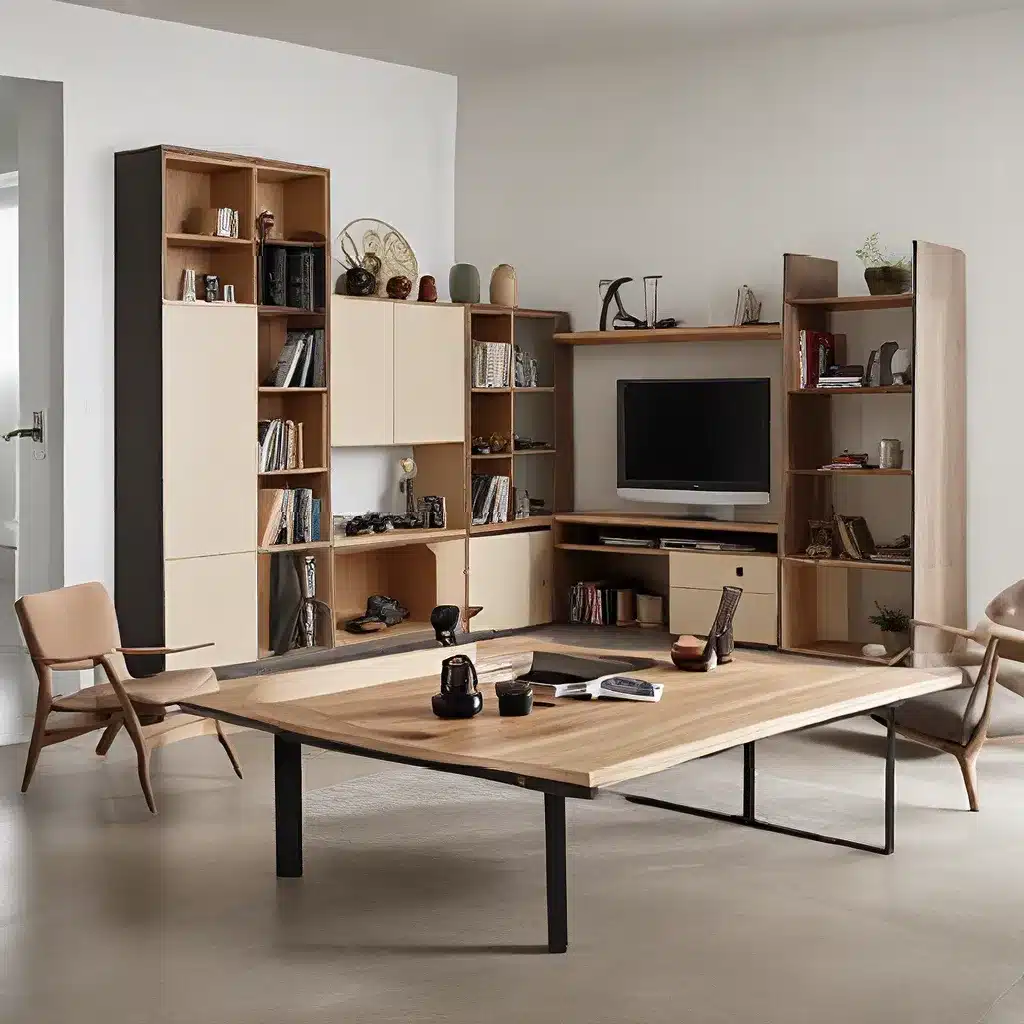
In the ever-evolving world of interior design, a new philosophy has emerged that seamlessly blends practicality and style – the concept of multifunctionality. As the demand for versatile living spaces continues to rise, designers and homeowners alike are exploring innovative solutions that cater to the diverse needs of modern lifestyles.
The Art of Crafting Multifunctional Marvels
At the heart of multifunctional design lie core principles that guide the creation of spaces that are both functional and aesthetically pleasing. Integrating practical solutions is a cornerstone in this approach, shaping environments that are not only visually captivating but also adaptable to the rhythm of daily life.
Maximizing Space Utilization: The multifunctional design philosophy is all about making every inch of a space count. From hidden storage solutions within furniture to utilizing vertical spaces, the goal is to optimize the available square footage efficiently. Convertible furniture, such as sofa beds, foldable tables, or ottomans with concealed storage, allows for quick transformations and adaptability to changing needs.
Strategic Spatial Planning: Thoughtful arrangement of furniture and design elements is key to maximizing functionality. By placing items with purpose, designers ensure a seamless flow and create distinct zones within a space, catering to various activities and needs.
Elevating Spaces with Stylish Aesthetics
While practical solutions are paramount in multifunctional design, the integration of stylish aesthetics is what elevates these spaces from mere functionality to visually captivating environments. This harmonious blend of form and function is what defines the essence of multifunctional design.
Cohesive Design Language: Stylish aesthetics in multifunctional design embrace a cohesive design language, where colors, materials, and design motifs are carefully coordinated throughout the space. The goal is to create a unified and visually pleasing environment, where every element contributes to a harmonious whole.
Staying Relevant with Trends: Remaining attuned to current design trends is a hallmark of stylish aesthetics in multifunctional spaces. Integrating the latest design movements ensures that the space remains relevant and reflects a sense of modernity, adding an extra layer of sophistication to its functionality.
Attention to Detail: Incorporating stylish aesthetics also involves meticulous attention to detail. From the selection of furniture pieces to the arrangement of decor elements, every detail is considered to enhance the overall visual appeal of the space. Thoughtful touches, such as carefully chosen accessories or accent pieces, contribute to the captivating ambiance.
Multifunctional Solutions Across Living Spaces
The influence of multifunctional design extends across various living spaces, redefining how we approach the design of our homes. Let’s explore how these transformative solutions elevate the functionality and style of different areas.
Multifunctional Living Rooms
Living rooms, often the heart of a home, benefit immensely from multifunctional design solutions. Integrating practical and versatile elements becomes essential in a world where dynamic lifestyles demand adaptive spaces.
Sofa Beds: Epitomizing multifunctional solutions, sofa beds seamlessly transform from comfortable seating during the day to a cozy bed when needed, offering flexibility without sacrificing space or style.
Modular Seating: Furniture pieces that can be rearranged or detached allow inhabitants to create various seating configurations, fostering an ever-changing dynamic within the living room.
Hidden Storage Ottomans: Ottomans with concealed storage compartments offer dual-purpose functionality, serving as seating and a discreet storage solution for items like blankets, cushions, or magazines.
Adaptable Coffee Tables: Coffee tables with adjustable heights bring an element of versatility, functioning as a standard coffee table or being raised as a dining or work surface, catering to different activities without the need for additional furniture.
Multifunctional Kitchens and Dining Areas
Kitchens and dining areas, traditionally designated for specific purposes, have undergone a transformative shift in design philosophy. Multifunctional solutions in these spaces optimize functionality and enhance the overall living experience.
Modular Kitchen Designs: Embracing modular designs, kitchens incorporate innovative storage solutions, such as pull-out shelves, rotating corner units, and adjustable racks, maximizing every inch of space.
Expandable Surfaces: Foldable or extendable kitchen counters and dining tables allow for versatility, adapting to various needs, from meal preparation to hosting larger gatherings.
Convertible Dining Furniture: Tables that can be expanded or transformed into different shapes seamlessly accommodate everyday meals and larger groups, catering to diverse entertaining needs.
Integrated Seating Solutions: Benches with hidden storage or stools that tuck neatly under the table optimize space in dining areas, serving functional purposes while contributing to a clean and uncluttered aesthetic.
Multifunctional Design in Small Spaces
In the era of urban living, where square footage is limited, the principles of multifunctional design shine the brightest. Compact furniture, vertical storage solutions, and intelligent spatial planning become essential tools for maximizing small spaces.
Foldable Desks and Hidden Storage Units: Multifunctional furniture items, such as foldable desks and concealed storage units, allow even the smallest spaces to be practical and stylish, adapting to the changing needs of their inhabitants.
Sustainable Multifunctionality: As sustainability takes center stage in design, multifunctional solutions align with eco-conscious practices. These designs incorporate sustainable materials and energy-efficient features, creating spaces that are not only versatile but also environmentally responsible.
Mastering Multifunctional Design through Education
For those aspiring to elevate their homes with multifunctional marvels, education plays a pivotal role. Certified online interior design courses provide the foundation for understanding the principles of multifunctional design, covering concepts such as space planning, furniture design for multifunctionality, and balancing practical needs with aesthetics.
By embracing the dynamic nature of modern lifestyles, the marriage of practicality and style remains a cornerstone in shaping the future of interior design. Through comprehensive interior design education, aspiring designers can unlock the potential of multifunctional design, contributing to the ongoing narrative of innovative and adaptable living spaces.
Explore the possibilities of Urban Grace Interiors, where our team of experienced designers blends practical solutions with stunning aesthetics, creating personalized spaces that elevate your living experience.

